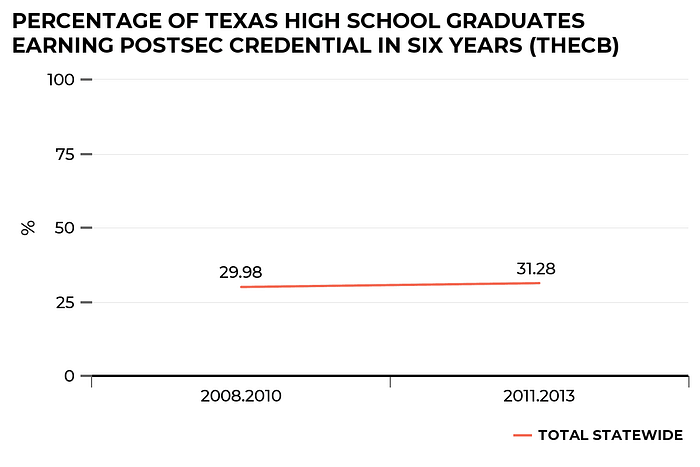Strong education system, strong workforce: Strategic Framework
This look at education and workforce is the first of our seven-part blog series, “Strategic Framework: 7 Key Findings,” which highlights some of the most compelling data from our new Strategic Framework.
POLICY AREA: Education & Workforce
A strong education system today ensures a strong workforce and a prosperous economy tomorrow
Creating a strong education system requires a high-quality early start.
Early learning is critical to helping students succeed in primary and secondary school and prepare for college and a career.
Unfortunately, Texas ranks last among our peer states in a measure of early literacy — percentage of fourth-grade students who read proficiently — and second-to-last in STEM proficiency — percentage of eighth-grade students who score proficiently in mathematics — as of the most recent assessment in 2022.
The Texas economy increasingly depends on a highly educated workforce.
By 2036, more than 70% of jobs in Texas will require a postsecondary credential. But today, fewer than 1 in 3 high school graduates obtain a postsecondary credential within six years of graduation. In 2019, Texas was 11th among 12 peer states in the rate of college completion within six years of enrollment.

A highly educated workforce is also critical to ensuring Texans’ economic security.
Workers with a postsecondary credential are four times as likely to hold a good job — earning around $65,000 or more per year — as workers with only a high school diploma. However, fewer than half of all working-age Texans, ages 25-64, have such a credential. As a consequence, only 56% of Texas households earn a living wage.

Texas has historically relied on highly educated newcomers to meet its workforce needs. Texas must invest in education so current residents can fill these higher-paying jobs.
Because metrics update frequently, please visit the Strategic Framework at framework.texas2036.org to view the most up-to-date trends.
